Martin Scorsese and DP Rodrigo Prieto AMC ASC harness Kodak looks for 'The Irishman'

A scene from Martin Scorsese’s "The Irishman." Image courtesy of Netflix.
Using Kodak 35mm film as the creative starting point and its subsequent visual bedrock, The Irishman is director Martin Scorsese's epic saga of organized crime in post-war America, as recounted by a hit man.
Spanning five decades, the superbly acted and thrillingly photographed drama has been widely praised as one of the director’s best-ever films, with chilling violence, betrayal, dishonesty and emotional bankruptcy throbbing through its veins.
The $159M Netflix movie was shot by cinematographer Rodrigo Prieto AMC ASC, and features Robert De Niro as Frank "The Irishman" Sheeran, Al Pacino as labor union leader Jimmy Hoffa, and Joe Pesci as senior mobster Russell Bufalino.
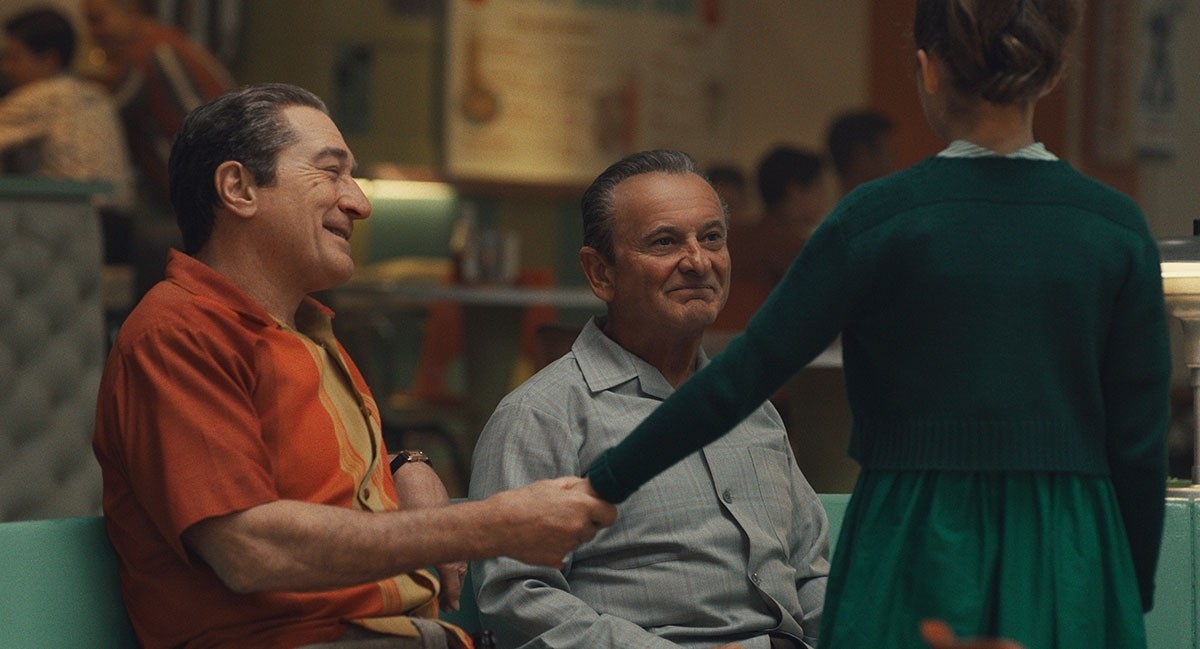
Robert De Niro and Joe Pesci star in "The Irishman." Image courtesy of Netflix.
Based on the 2004 book I Heard You Paint Houses by Charles Brandt, and adapted for the screen by Steve Zaillian, the biographical film follows Sheeran, a WWII veteran, as he recalls his many years working as a hit man for the Bufalino crime family and his own involvement in the mysterious disappearance of his good friend Hoffa in 1975. Sheeran died in 2003 aged 83.
Prieto previously shot Scorsese's The Wolf of Wall Street (2013) and Silence (2016) and was Oscar-nominated for Silence as well as Ang Lee's Brokeback Mountain (2005) – all of which harnessed Kodak 35mm film.
As with those previous productions, The Irishman was originated from the ground up as a celluloid-based movie and, in tune with the time-shifting storyline, Prieto used Kodak 35mm filmstocks as the baseline for its creative use of color palette, much-praised by the critics.
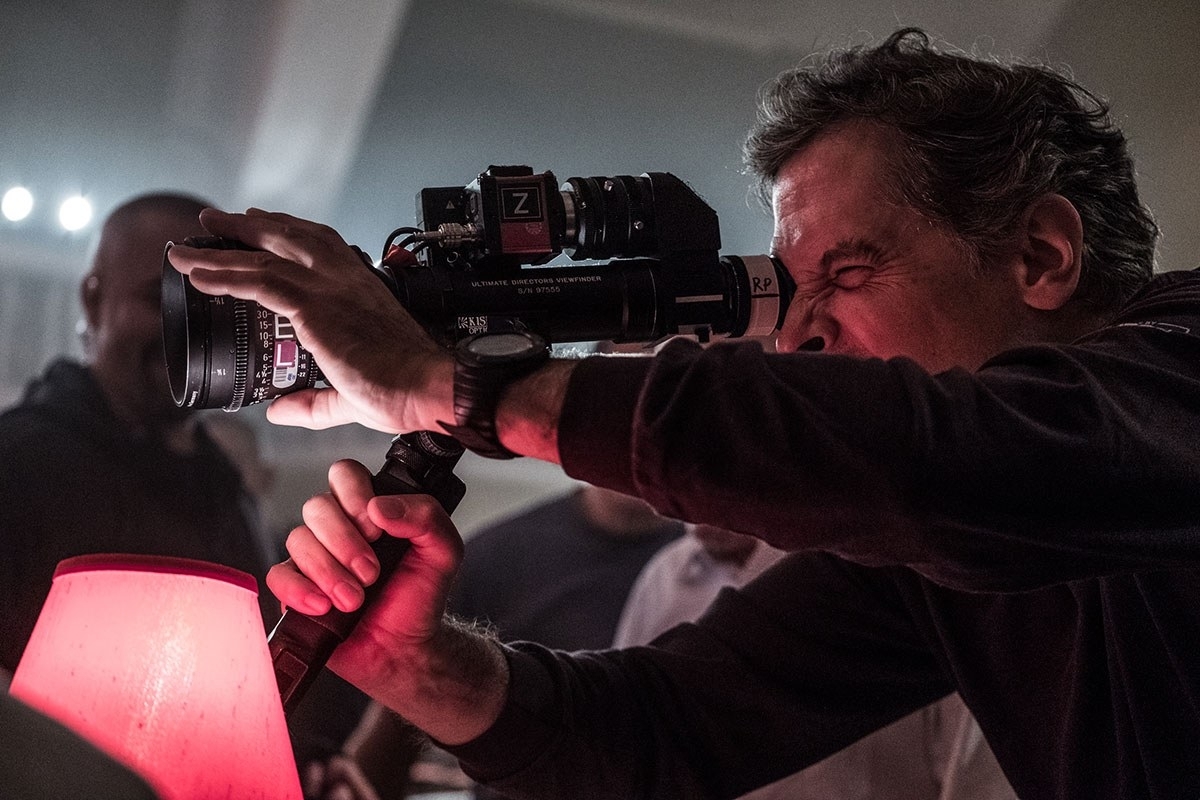
DP Rodrigo Prieto AMC ASC lines up a shot during production on Martin Scorsese’s "The Irishman." Photo by Niko Tavernise. Image courtesy of Netflix.
Prieto says he first heard about The Irishman during the post production phase on Silence. “I actually read the book before I read the script and found the narrative to be very interesting and hugely entertaining. Along with organized crime and the Jimmy Hoffa story, it was also peppered with all sorts of U.S. historical aspects from the several different decades. It was pretty epic in scope, and I realized it would be very challenging to visualize those different decades. It was very exciting for me to come up with a visual design for such a vast story.”
He adds: “In defining the look of the movie, Marty mentioned early on his thoughts about it being like a home movie – not in the way that the camera might be shaky or with grainy images, but in the way it might evoke the kind of feeling and emotion you get from the visual memory of the past
“Our goal on The Irishman was transport the viewer back into different eras of Frank Sheeran’s life – WWII, the 1950s, ’60s, ’70s and early 2000s – with different looks that felt authentic and palpable. Film negative has an innate magic to help you do this, to reproduce the subtle nuances of feelings on an actor’s face, as well as to create visual environments to embody these emotions.”
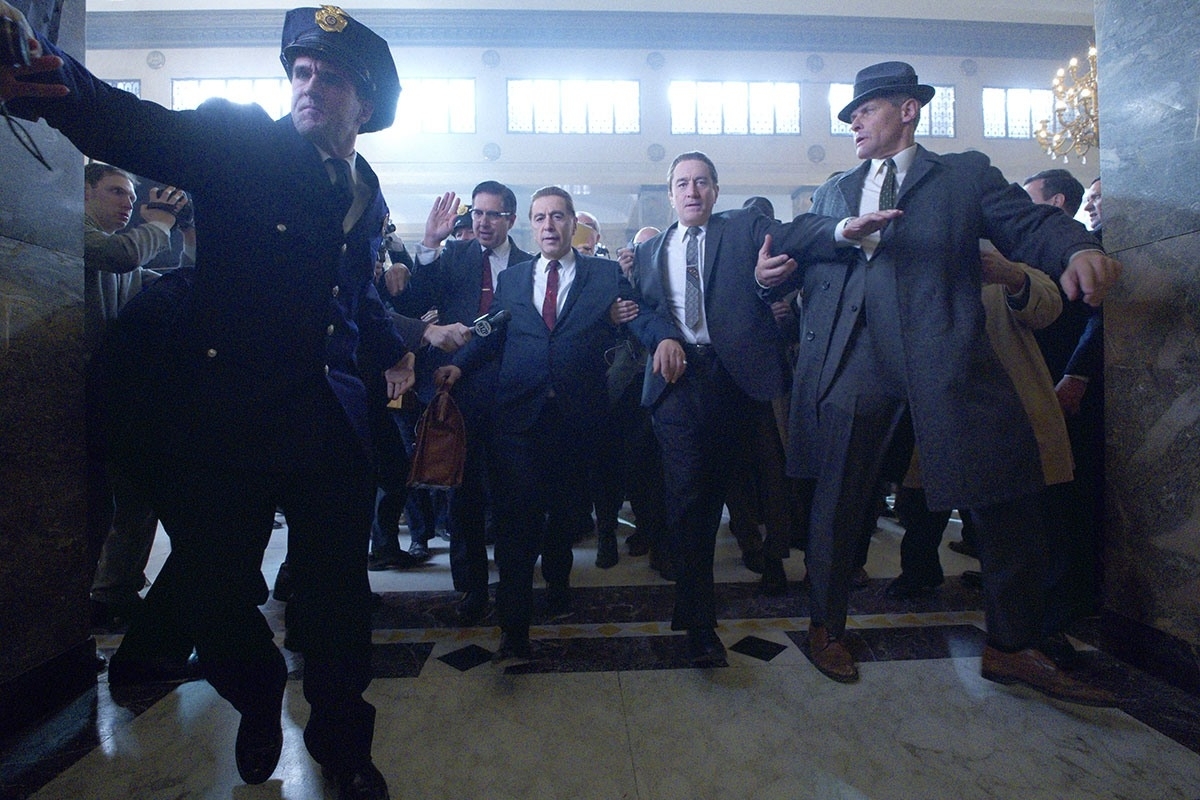
A scene from Martin Scorsese’s "The Irishman." Photo by Niko Tavernise. Image courtesy of Netflix.
This led Prieto to research old still photography emulsions that were popular during those times, and to emulate the look and color reproduction of KODACHROME Film for the scenes in the 1950s, and EKTACHROME Film for those set in the 1960s. For the 1970s he took a different approach, electing to mirror the turns of events in Frank Sheeran’s later life by steadily denuding the picture of color using techniques that would emulate the ENR process.
(Invented by Ernesto Novelli Rimo at Technicolor Rome for Vittorio Storaro AIC ASC, ENR is a silver retention process in the printing phase which results in a high-contrast image with deep blacks and reduced color saturation.)
Of course, The Irishman has also been much talked about for the digital “youthification” production and post technologies deployed to de-age the key cast, thereby allowing them to play the same characters over several decades in the story.
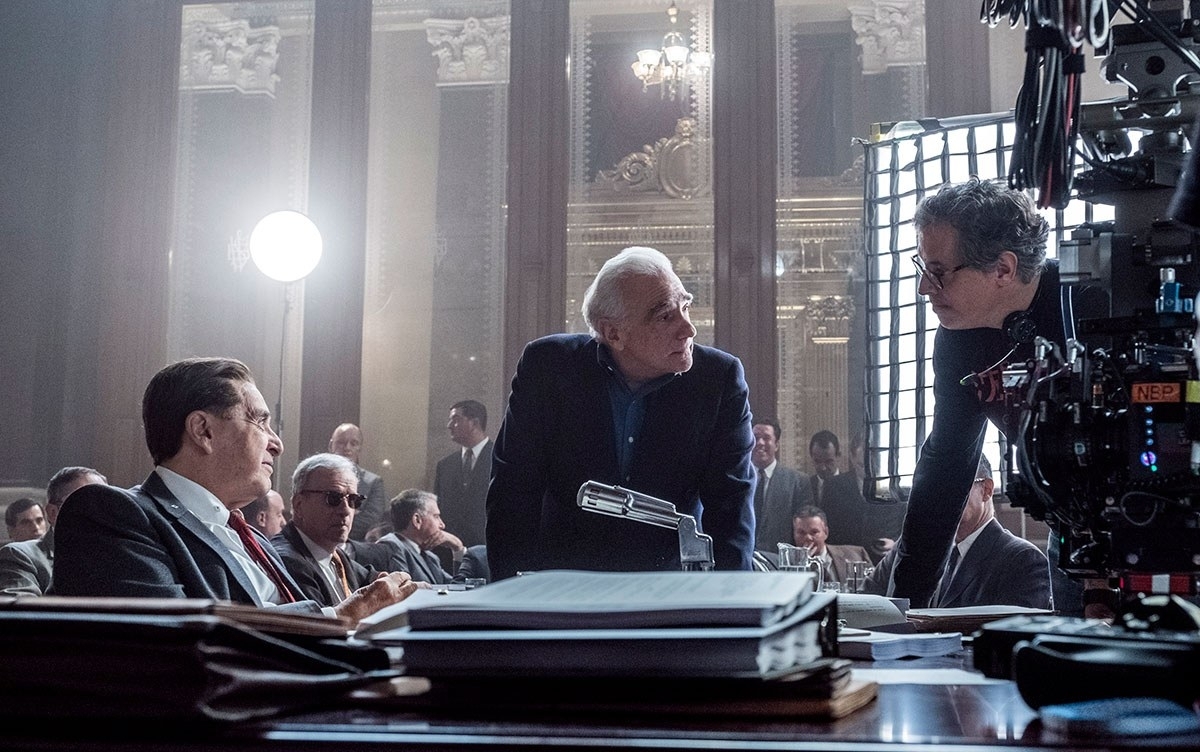
Actor Al Pacino, with director Marin Scorsese and DP Rodrigo Prieto AMC ASC during a courtroom scene in "The Irishman." Photo by Niko Tavernise. Image courtesy of Netflix.
“Although we would have loved to have shot The Irishman entirely on film, the fact that we had so many shots requiring the actors to be de-aged meant we necessarily needed to approach those in a different way,” explains the cinematographer.
This saw Prieto collaborating with VFX supervisor Pablo Helman of Industrial Light & Magic and ARRI CS New York on the development of a special camera rig, incorporating a trio of digital cameras to capture the volumetric information of the actors faces. The shutters of the three cameras needed to be perfectly synchronized, which necessitated utilizing digital capture for these VFX shots.
When it came to the principal photography on the film, all shots that did not involve the de-ageing of the performers and all of the second unit photography were shot on 35mm Kodak film – very close to a 50/50 split in the final result.
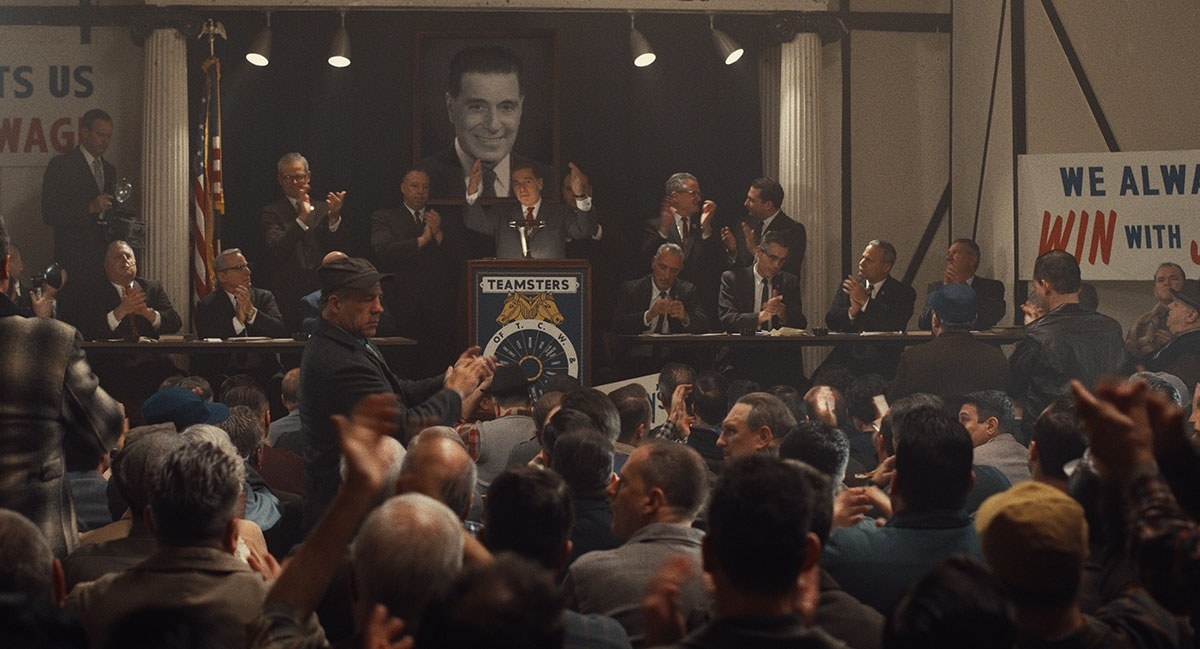
A scene from Martin Scorsese’s "The Irishman." Image courtesy of Netflix.
Prieto selected two Kodak stocks for the filmed portions of The Irishman – KODAK VISION3 250D Color Negative Film 5207 for daytime exteriors and interiors and KODAK VISION3 500T Color Negative Film 5219 for everything else, including all of the night work.
“The 35mm filmed footage of the WWII, 1950s and ’60s sequences were all developed normally through the lab,” says Prieto. “But for the 1970s sequences and onwards, I started pushing both 35mm filmstocks by one stop, as I wanted the texture and grain to come out more to support the storytelling in the latter part of the movie. Kodak Film Lab in New York processed our film rushes, which was very convenient and made it very affordable to us.”
The scanned film dailies, and the digitally acquired footage, both had a variety of custom-developed film-emulation LUTs applied to complete Prieto’s desire for the different Kodachrome, Ektachrome and ENR-process looks across the different decades of the story.
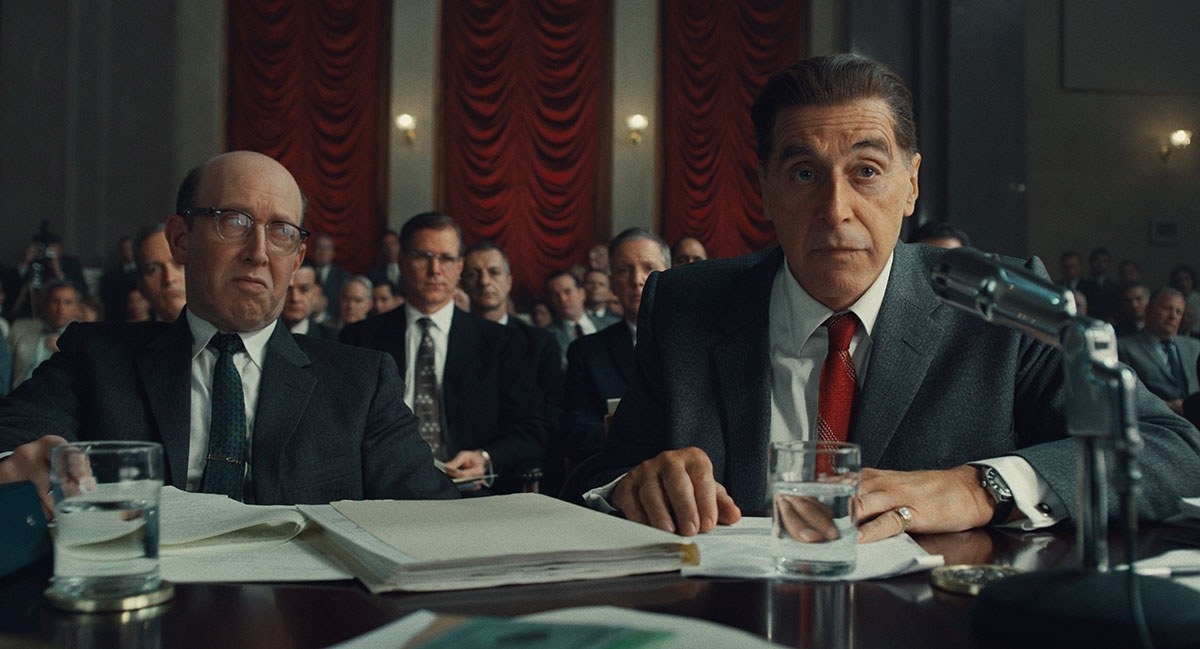
A scene from Martin Scorsese’s "The Irishman." Image courtesy of Netflix.
The result of these endeavors is that the look of The Irishman moves from high color saturation in the ’50s and ’60s, before being slowly drained of colour as time advances through the 70’s all the way to the year 2000.
“With The Irishman, Marty wanted to tell a strong and powerful story in a visually realistic way,” Prieto concludes. “Once again, we put our faith in film, and historical filmic looks, to support the dramatic storytelling, and have been rewarded with a result of which both myself and Marty are very proud.”